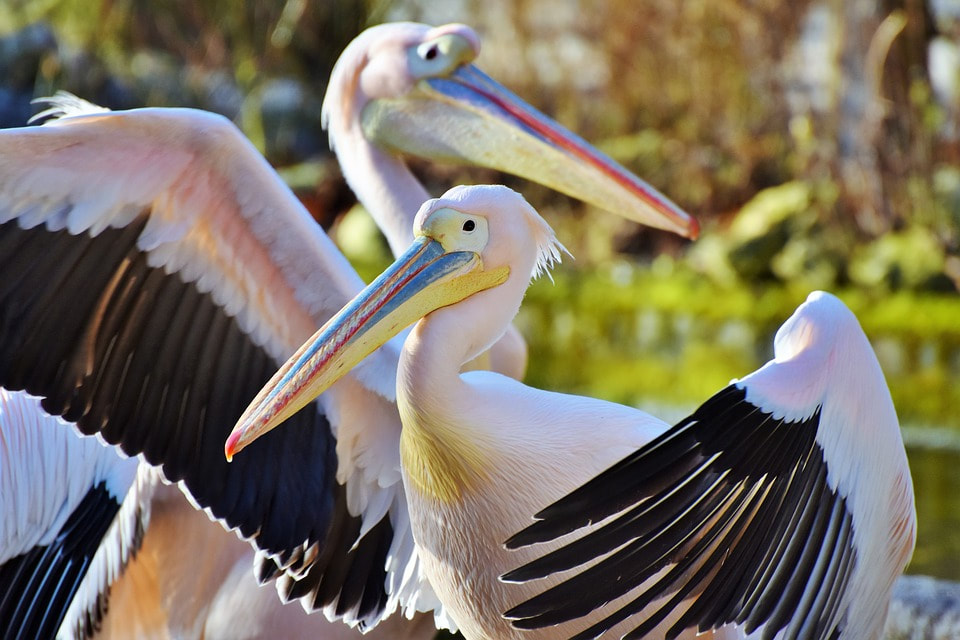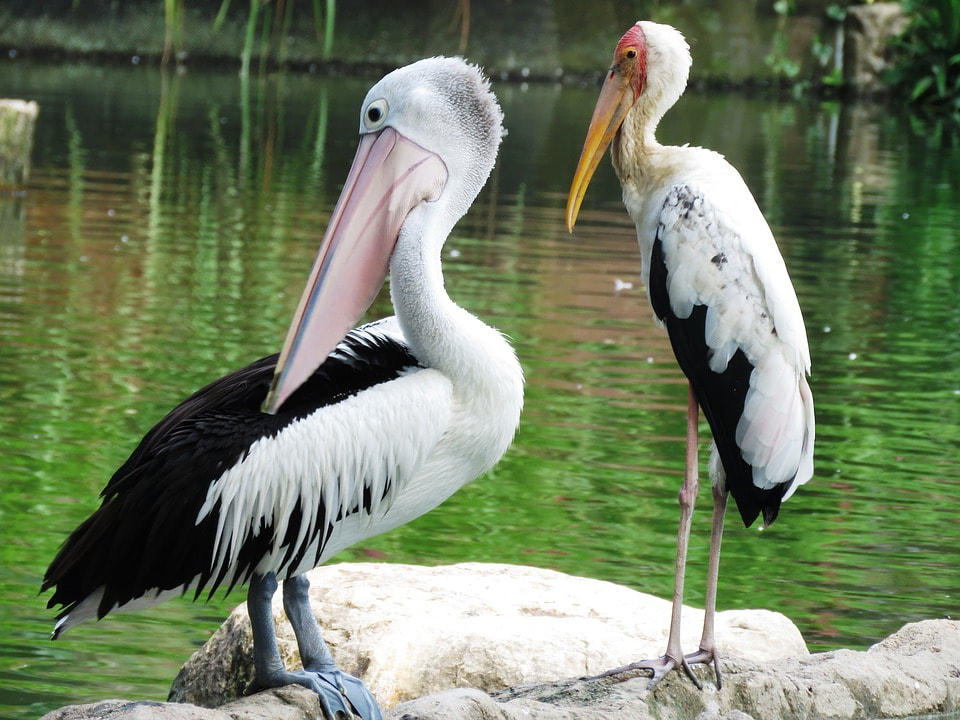Don't be looking too small in the pelican's eyes. It just may mistake you for food! Pelicans have a very healthy appetite and are never picky eaters. Pelicans diet consist of but never limited to the following:
- Fish
- Birds (ducks, pigeons, etc.)
- Frogs
- Rabbits
- Baby Crocodiles
- Small Cats
- Sea gulls
Pelicans can live for 15 to 25 years in the wild and may live about 16-28 years in captivity.
Pelican Body Structure and Mass
Pelicans have a general wingspan of approximately 1.8-3.5 m as a full adult. They have a length of 100-140 cm. The American white pelican has a length of approximately 1.2-1.6m.
Pelican Gestation Period
Pelican will lay 2 eggs. The incubation period will last about 3 months wherafter the pelican chick hatch out of their eggs. The female pelican feeds her young until they are around 3 months old, although baby pelicans are usually able to walk and swim when they are about 2 months old.
Pelicans will always have their homes near to their main source of food which is fish. These birds typically live no more than 20 miles or so from a major body of water. Because they are carnivorous animals that feed almost exclusively on marine life, particularly fish. Coastal pelicans build their nests near the shore and also on small islands, while inland pelicans prefer forests and mangroves. In the Forest, the pelican will also feast on other small animals such as lizards, birds, etc.
Pelicans are mostly found in warmer regions of any land and can be found in but not limited to:
- New Guinea
- Australia
- Fiji
- Indonesia
- New Zealand
- America
The brown pelican is a keen-eyed predator that can spot a fish swimming under the ocean’s surface even while flying 60 feet above. Its bigger cousin, the Peruvian pelican, also has great vision. Once a target has been spotted from above, the pelicans plunge into the sea bill-first at high speeds—and often from a height of several stories. When they collide with the prey, the impact force usually stuns the victim and it’s then scooped up in the gular pouch.
Pelican Natural Predators
Apart from us humans who hunt the pelican for meat and feathers. The pelicans are also eaten by large cats, wild dogs and coyote and large snakes.
- Brown Pelican
- Dalmatian Pelican
- American White Pelican
- Australian Pelican
- Great White Pelicans
- Pink-Backed Pelican
- Spot-Billed Pelican



 RSS Feed
RSS Feed
